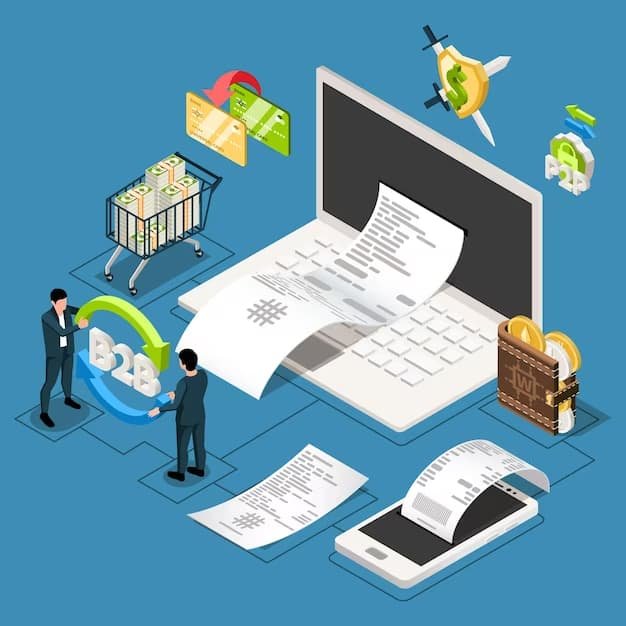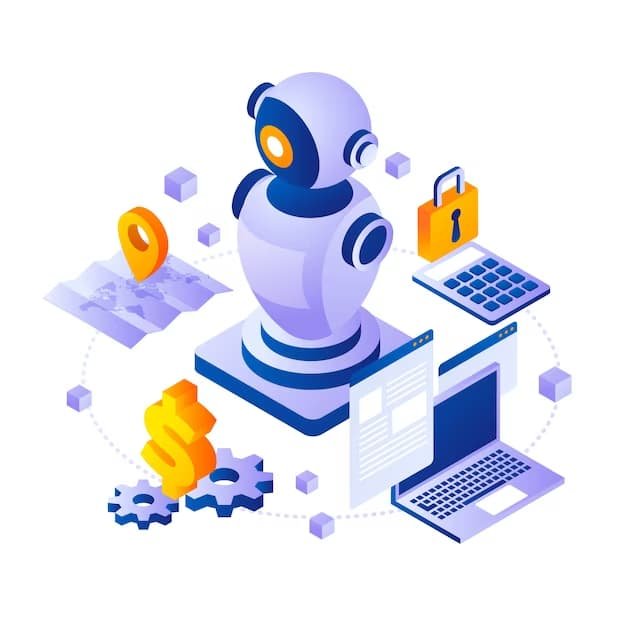In the ever-evolving landscape of finance, technology has played a pivotal role in reshaping traditional processes and driving efficiency to new heights. Among the many areas undergoing transformation, automated invoice payment systems stand out as a game-changer for businesses of all sizes. As we dive into this deep exploration of the future of finance, we’ll unravel the intricacies of automated invoice payment systems, examining their significance, benefits, challenges, and the profound impact they are poised to have on businesses.

The Genesis of Automation in Finance
To understand the future, we must first reflect on the past. In the world of finance, automation has been an ongoing journey, marked by milestones such as the introduction of electronic trading, online banking, and digital wallets. However, the automation of invoice payments represents a more recent shift, one that promises to revolutionize financial operations for businesses.
What Are Automated Invoice Payment Systems?
At its core, an automated invoice payment system is a technological solution designed to streamline the process of paying invoices and managing financial transactions. It employs a combination of software, data processing, and electronic communication to facilitate the seamless transfer of funds from one party to another.
Unlike traditional manual methods of invoice processing, which are often time-consuming and error-prone, automated systems introduce efficiency and accuracy into the equation. Here’s how it typically works:
- Invoice Receipt: Invoices are received electronically or scanned into the system.
- Data Extraction: Key invoice information, such as the amount, due date, and payee, is automatically extracted using optical character recognition (OCR) or similar technologies.
- Verification: The system validates the invoice data against pre-established criteria, ensuring accuracy and compliance with business rules.
- Approval Workflow: Invoices are routed through predefined approval workflows, with notifications sent to relevant stakeholders.
- Payment Initiation: Once approved, the system triggers the payment process, either through electronic funds transfers (EFT), automated clearing house (ACH) payments, or other digital payment methods.
- Record Keeping: A comprehensive record of each transaction is maintained, simplifying auditing and compliance efforts.
The Significance of Automated Invoice Payments

1. Enhanced Efficiency and Productivity
One of the most significant advantages of automated invoice payment systems is their ability to boost efficiency and productivity within an organization. Manual invoice processing often involves a series of repetitive and time-consuming tasks, from data entry to paper handling. By automating these processes, businesses can reallocate human resources to more strategic and value-added activities, while also reducing the risk of human error.
2. Speed and Timeliness
Timely payments are crucial for maintaining strong supplier relationships and avoiding late payment penalties. Automated systems are designed to expedite the payment cycle, ensuring that invoices are paid promptly and within agreed-upon terms. This speed not only benefits suppliers but can also unlock early payment discounts for businesses.
3. Cost Reduction
Automation leads to cost savings on multiple fronts. Businesses can reduce labor costs associated with manual data entry and invoice processing. Additionally, the elimination of paper-based transactions reduces printing, mailing, and storage expenses. The cost-effectiveness of automated systems makes them an attractive proposition for businesses looking to optimize their financial operations.
4. Error Reduction and Accuracy
Manual data entry is prone to errors, which can lead to payment discrepancies, disputes, and strained relationships with suppliers. Automated invoice payment systems significantly reduce the risk of errors by eliminating the need for manual input. The software’s accuracy in data extraction and validation ensures that payments are processed correctly.
5. Enhanced Visibility and Control
Visibility into the entire invoice payment process is a valuable asset for businesses. Automated systems provide real-time access to transaction data, approval status, and payment history. This transparency enhances control over financial operations, allowing businesses to make informed decisions and quickly address any issues that may arise.
6. Compliance and Security
Compliance with financial regulations and data security are paramount concerns for businesses. Automated invoice payment systems often come equipped with built-in compliance features, helping organizations adhere to regulatory requirements. Additionally, they offer enhanced security measures, safeguarding sensitive financial information and reducing the risk of fraud.
The Future Landscape: Innovations and Trends
As automated invoice payment systems continue to gain traction, several key trends and innovations are shaping the future of this financial technology:
1. Artificial Intelligence (AI) and Machine Learning

AI and machine learning technologies are being integrated into invoice payment systems to enhance data extraction, improve decision-making, and predict payment behavior. These capabilities will further reduce manual intervention and enhance the accuracy of financial processes.
2. Blockchain Integration
Blockchain technology is making inroads into the finance sector, and invoice payment systems are no exception. Blockchain offers a secure and transparent ledger for financial transactions, reducing the risk of fraud and providing immutable records of payment history.
3. Mobile Accessibility
The future of finance is mobile. Automated invoice payment systems are increasingly accessible via mobile applications, allowing businesses to manage their finances on the go. Mobile accessibility enhances convenience and responsiveness.
4. Vendor Self-Service Portals
Many systems now offer vendor self-service portals, allowing suppliers to submit invoices, track payment statuses, and communicate with the buyer directly. This streamlines communication and enhances collaboration between businesses and their suppliers.
5. Integration with Accounting Software
Seamless integration with accounting software is a top priority for many businesses. Automated invoice payment systems are evolving to offer plug-and-play compatibility with popular accounting platforms, simplifying financial management.
6. Sustainability and Green Initiatives
In response to growing environmental concerns, some automated systems are promoting sustainability by reducing paper usage and emphasizing digital processes. This aligns with broader corporate sustainability goals.
Challenges and Considerations

While the future of finance appears promising with the integration of automated invoice payment systems, there are challenges and considerations to bear in mind:
1. Implementation Costs
The initial setup and integration of an automated system can be costly. Businesses must weigh these costs against the long-term benefits and savings.
2. Change Management
Introducing automation may require a cultural shift within an organization. Employees must adapt to new processes and technologies, which can be met with resistance.
3. Data Security
The handling of sensitive financial data demands robust security measures. Businesses must invest in security protocols to safeguard against potential breaches.
4. Compatibility and Integration
Ensuring that the automated system seamlessly integrates with existing software and workflows is essential for a smooth transition.
5. Regulatory Compliance
Staying compliant with evolving financial regulations is crucial. Automated systems must be capable of adapting to changing compliance requirements.
If you want to study accounting course, visit our website Bynco Academy
Conclusion: Embracing the Future
Automated invoice payment systems represent a pivotal shift in the finance landscape, offering businesses unprecedented efficiency, accuracy, and control over their financial operations. As technology continues to advance and businesses adapt to the digital age, these systems will play an increasingly central role in shaping the future of finance.
The journey towards automation may require initial investments in technology and change management, but the long-term benefits are undeniable. By embracing the future of finance through automated invoice payment systems, businesses can position themselves for success in an increasingly dynamic and competitive world of commerce. The path to financial innovation begins here, and those who tread it are likely to reap the rewards of enhanced efficiency, transparency, and financial well-being.


